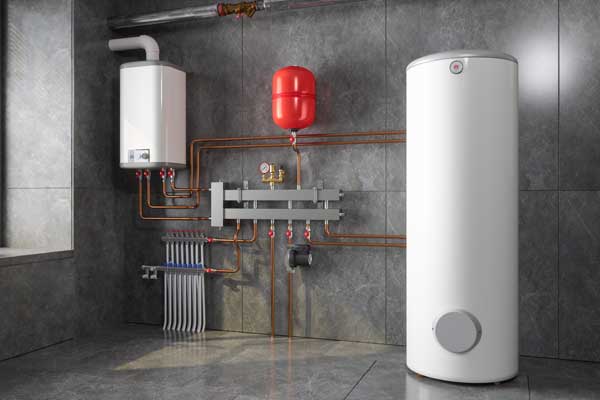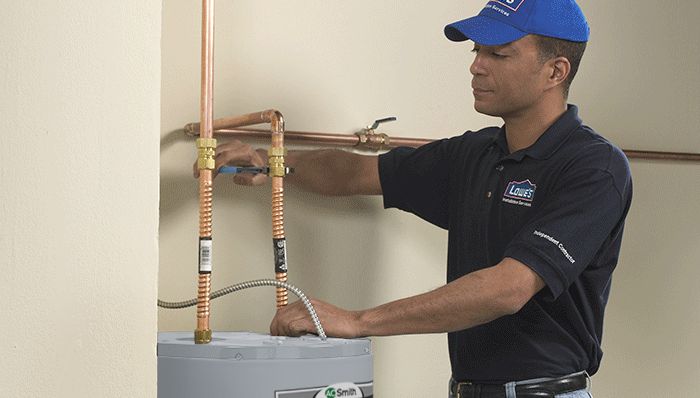Simple Steps to Maintaining Your Home's Hot Water System
Simple Steps to Maintaining Your Home's Hot Water System
Blog Article
They are making a few great points on Water Heater Maintenance Tips You Can't Afford to Forget in general in the content down below.

Hot water is essential for everyday comfort, whether it's for a revitalizing shower or cleaning meals. To guarantee your hot water system runs successfully and lasts longer, normal maintenance is crucial. This article offers functional pointers and understandings on how to preserve your home's warm water system to stay clear of disruptions and expensive repair services.
Introduction
Keeping your home's warm water system might seem difficult, however with a couple of straightforward steps, you can guarantee it runs smoothly for many years ahead. This guide covers whatever from understanding your hot water system to DIY upkeep pointers and recognizing when to hire specialist help.
Significance of Preserving Your Warm Water System
Regular maintenance not just expands the lifespan of your hot water system however additionally ensures it operates effectively. Disregarding maintenance can result in reduced performance, greater energy bills, and even early failing of the system.
Indicators Your Hot Water System Needs Maintenance
Recognizing when your warm water system requires attention can avoid major problems. Watch out for indications such as irregular water temperature level, weird sounds from the heating system, or corroded water.
Understanding Your Hot Water System
Before diving right into upkeep jobs, it's handy to recognize the standard parts of your warm water system. Typically, this includes the water heater itself, pipes, anode rods, and temperature controls.
Monthly Maintenance Tasks
Regular monthly checks can help catch minor issues before they escalate.
Flushing the Water Heater
Flushing your water heater removes sediment build-up, boosting performance and lengthening its life.
Monitoring and Changing Anode Rods
Anode poles stop rust inside the storage tank. Examining and replacing them when broken is critical.
Evaluating and Readjusting Temperature Level Setups
Changing the temperature settings ensures optimum efficiency and safety and security.
Do It Yourself Tips for Upkeep
You can do a number of maintenance jobs yourself to maintain your warm water system in leading condition.
Checking for Leakages
Consistently check pipes and connections for leakages, as these can cause water damage and higher costs.
Examining Stress Relief Valves
Testing the stress safety valve ensures it functions appropriately and stops excessive pressure build-up.
Protecting Pipes
Shielding hot water pipelines reduces warmth loss and can save power.
When to Call a Professional
While do it yourself maintenance is helpful, some problems need professional experience.
Complicated Issues Calling For Expert Help
Instances include significant leaks, electric issues, or if your water heater is continually underperforming.
Routine Specialist Maintenance Benefits
Specialist maintenance can consist of extensive inspections, tune-ups, and guaranteeing conformity with safety criteria.
Conclusion
Normal maintenance of your home's warm water system is essential for efficiency, durability, and cost savings. By adhering to these tips and understanding when to look for specialist help, you can guarantee a reputable supply of warm water without unexpected disruptions.
Water Heater Maintenance: The Basics
Maintaining your water heater will ensure it operates efficiently and has a longer lifespan. Neglecting regular maintenance can lead to costly repairs and an even bigger chunk of your savings if you have to replace it sooner than necessary. But there’s good news: Most water heater maintenance tasks are relatively simple and easy for homeowners with basic DIY skills.
Flush the Water Heater
Over time, sediment and minerals can build up in the tank, reducing its efficiency and potentially causing damage. To flush the tank, turn off the power or gas supply, attach a hose to the drain valve near the bottom and open the valve to drain the water until it runs clear. Ideally, flush the tank annually.
Replace the Anode Rod
The anode rod is a sacrificial metal rod that helps prevent corrosion inside the tank. Inspect and replace it every three to five years or per the manufacturer's recommendation. To replace the anode rod, turn off the power or gas supply, drain a few gallons of water from the tank, unscrew the old rod and replace it with a new one. If the anode rod is significantly corroded or covered in calcium buildup, it's a sign the water heater may need to be replaced soon.
Tune-Up
A yearly tune-up can help identify potential issues and ensure your water heater operates at peak efficiency. This typically involves checking the thermostat, burner assembly (for gas heaters) and any other components specified by the manufacturer. During a tune-up, the technician may also clean the burner and adjust the pilot light (for gas heaters) or examine the heating elements (for electric heaters).
How to Maintain Your Water Heater
Insulate the tank. Insulating the tank can improve energy efficiency and reduce heat loss, saving you money on energy bills. You can purchase precut insulation blankets designed specifically for water heaters or use standard fiberglass insulation wrapped securely around the tank. Check the temperature. The recommended water temperature for most households is around 120 degrees Fahrenheit (49 degrees Celsius). Higher temperatures can increase energy costs and potentially cause scalding. Use a kitchen thermometer to check the temperature at the faucet nearest the water heater. Monitor water pressure. Excessive water pressure can strain the water heater and cause leaks or even tank failure. Install a pressure-reducing valve if necessary. The ideal water pressure range is between 60 and 70 PSI (pounds per square inch). Test the temperature and pressure (T&P) relief valve. The T&P relief valve is a safety feature that releases pressure if the tank gets too hot or the pressure builds up too high. Test it annually by lifting the lever and allowing a small amount of water to release. Replace the valve if it doesn't release water or reseal properly. Check for leaks. Regularly inspect the tank, pipes and fittings for leaks or corrosion. Deal with issues promptly to prevent further damage. Even a small leak can lead to significant water damage over time. Consider a tankless water heater. If your traditional tank-style water heater is nearing the end of its lifespan ( typically 10 years), consider replacing it with a tankless water heater. These units heat water on demand, reducing standby energy losses and potentially saving you money on your energy bills. Schedule professional maintenance. While homeowners can perform many water heater maintenance tasks, it's still a good idea to schedule professional maintenance every few years. A plumber or HVAC technician can thoroughly inspect the unit, identify potential issues and ensure it operates safely and efficiently. https://www.homeserve.com/en-us/blog/home-improvement/hot-water-heater-maintanence/

Hopefully you enjoyed our piece about How to Maintain Your Water Heater & Prolong its Life. Many thanks for finding the time to read our piece. If you please set aside a second to distribute this blog posting if you enjoyed reading it. I value your readership.
Click Here Report this page